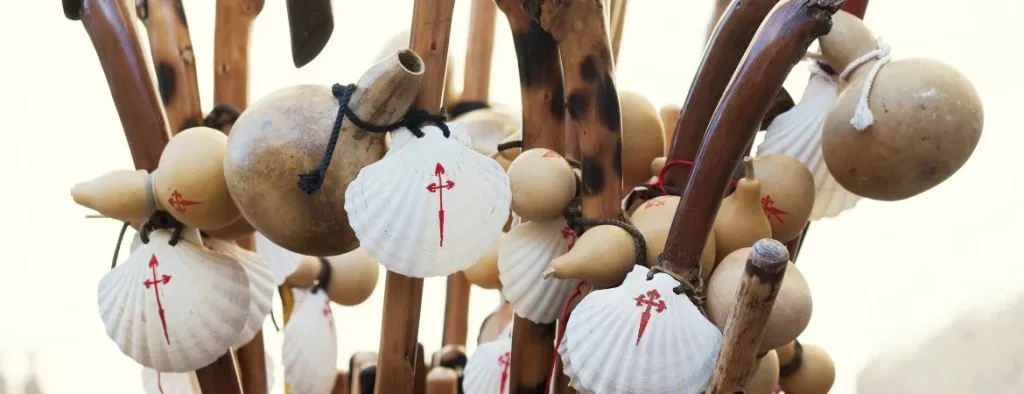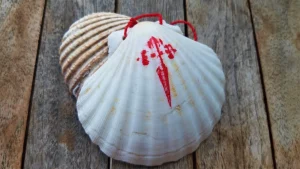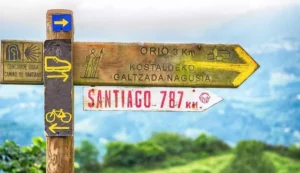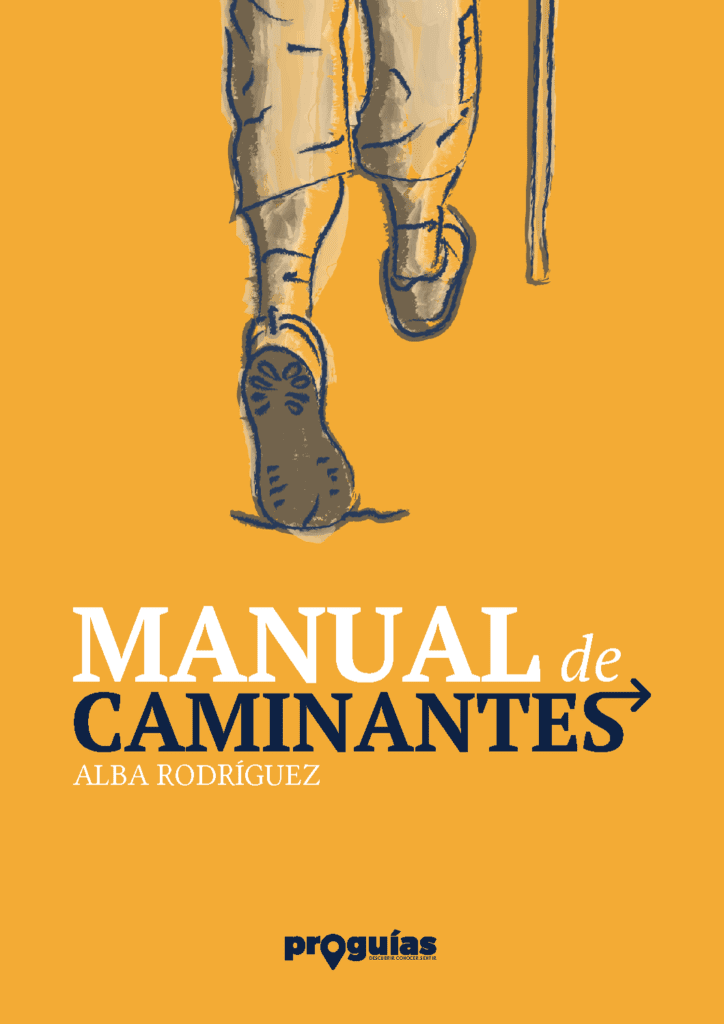Along with the gourd that served as a canteen to carry water and the staff to help walking, the pilgrim's shell has become, over the centuries, one of the central elements of the clothing of the Camino de Santiago. But not all these objects have the same value. Why?
The value of the pilgrim's shell
Unlike the staff and the gourd, which had practical uses for those who took to the roads, the value of the scallop shell was more demonstrative. That is to say: it indicated that the person carrying it had reached the Compostelan goal and was returning to his or her place of origin. In other words, pilgrims only sewed the scallop to their clothes once they had arrived in Santiago. For many centuries, in fact, that scallop was what the chapter of the Cathedral of Santiago gave to the pilgrims instead of the document called "Compostela" that today we collect in the Pilgrim's Office. On the documentation of the Camino we have already written a post on this blog.
➔ The Compostela and other documents of the Camino de Santiago
The story of the origins of the "Compostela" tells us that the ecclesiastical authorities took the decision to substitute the scallop for the document when they realised that many people were coming and going with shells like those of Santiago without having made the pilgrimage. After all, the scallop offered special protection to pilgrims on their return home (assaulting or attacking a returning pilgrim carried heavier penalties), and could be obtained in many places along the coast.
With the rise of the pilgrimage to Santiago in the 11th and 12th centuries, the pilgrim's shell became one of the most popular and recognisable symbols of the pilgrimage to Compostela. Until becoming the queen of the Jacobean souvenirs of today. But why a scallop shell?
Some theories...
There are many theories about the symbolism of the scallop shell and its connection with the cult of Santiago el Mayor. Some more plausible than others. None, however, has achieved unanimity.
One of the most widespread theories is that the pilgrim's shell is considered to be the perfect cup or bowl. Because of the concave shape of the shell, it could be used for drinking liquids or even as a spoon. The truth is that spoons - and objects with similar shapes and uses - are one of the oldest human tools. We have found "spoons" in Palaeolithic sites and certainly in the 11th century they could be found everywhere. However, it is quite possible that pilgrims used them to drink from springs and rivers. This is still done today. But is this the origin of their link with Santiago?
Another theory, much more symbolist, sees in the grooves of the pilgrim's shell a representation of a goose's leg. A goose? It turns out that For many ancient traditions, the goose was a symbol of initiatory knowledge. We have already written about this relationship between the Way of St. James and geese.
➔ A symbolic map of the Way of Saint James: the Game of the Goose
Other traditions link the scallop shell with Venus and the rebirth of people. And, for that matter, with the dogma of resurrection, overcoming death, etc.
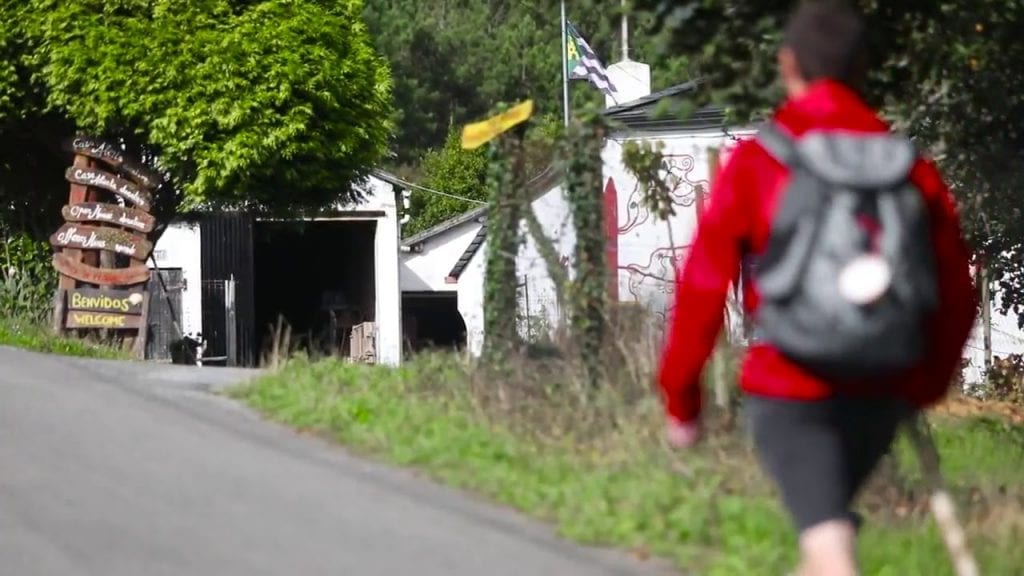
...and some legend
Of course, there are also legends where the pilgrim's shell has a prominent role or presence. One of the most popular tells of a first century knight who, while riding his horse near the coast, saw a shipwrecked boat approaching the shore. The knight turned his horse towards the water, ready to help the two men who were trying hard not to be shipwrecked. Before he could get there, however, a giant wave swept him to the bottom.
At that moment, the knight invoked the apostle. Then, he felt that a supernatural force pulled him from the bottom of the water and brought him back to the surface, dragging him to the shore. There he saw that the boat was the one carrying the body of Saint James the Greater. And that his body and that of his horse - on which he had galloped out of the water - were covered with scallop shells. In this legend, the knight's salvation is considered a miracle of Saint James, thus linking the shells to the apostle.
Other versions narrate the event in a similar way. In one, the scallop-covered knight emerges majestically to mark the place where the disciples of Saint James carrying his body were to disembark. This version suggests that the knight was none other than the soul of Saint James, linking the apostle with his representation as a military saint, and thus linking the shell, the white horse and the saint himself.
The role reserved by the church
Legends and symbolism aside, the truth is that the origin of this scallop-Santiago link is not clear. What there is no doubt about is that the shipment of scallop shells as a symbol of St. James was a very lucrative business. Both for the city of Santiago and for the church in Santiago de Compostela.
It is not by chance that in front of one of the main accesses of the pilgrims to the city, the neighbourhood called "dos concheiros" (the shells) expanded. There they sold their own shells brought from the nearby ports of Padrón, Noia or Muros. At the Azabachería gateway, where the French Way and all those that connected with it used to lead to, craftsmen of all kinds also sold reproductions made of lead, ivory, jet or silver.
The church in Santiago de Compostela regulated the business, taking a percentage of each sale and prohibiting the sale of the pilgrim's shell outside the city. On pain of excommunication. Even so, the royal capacity to limit its use and commercialisation must have been less than the chapter expected. Thus, over time, the scallop would end up losing its value as proof of having completed the pilgrimage to Santiago. Its Jacobean link, however, remains intact.


